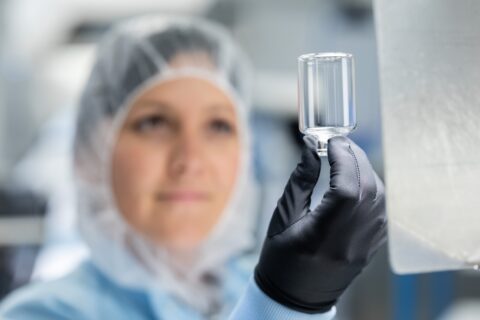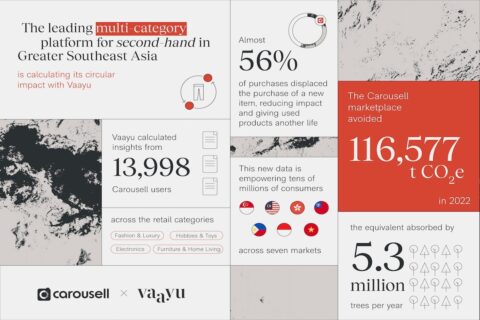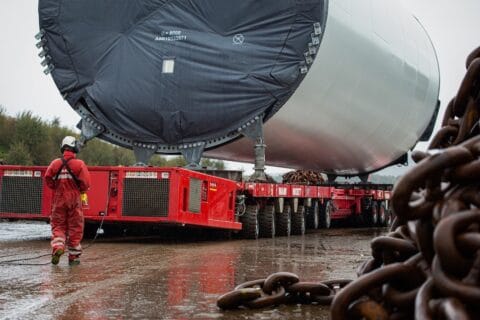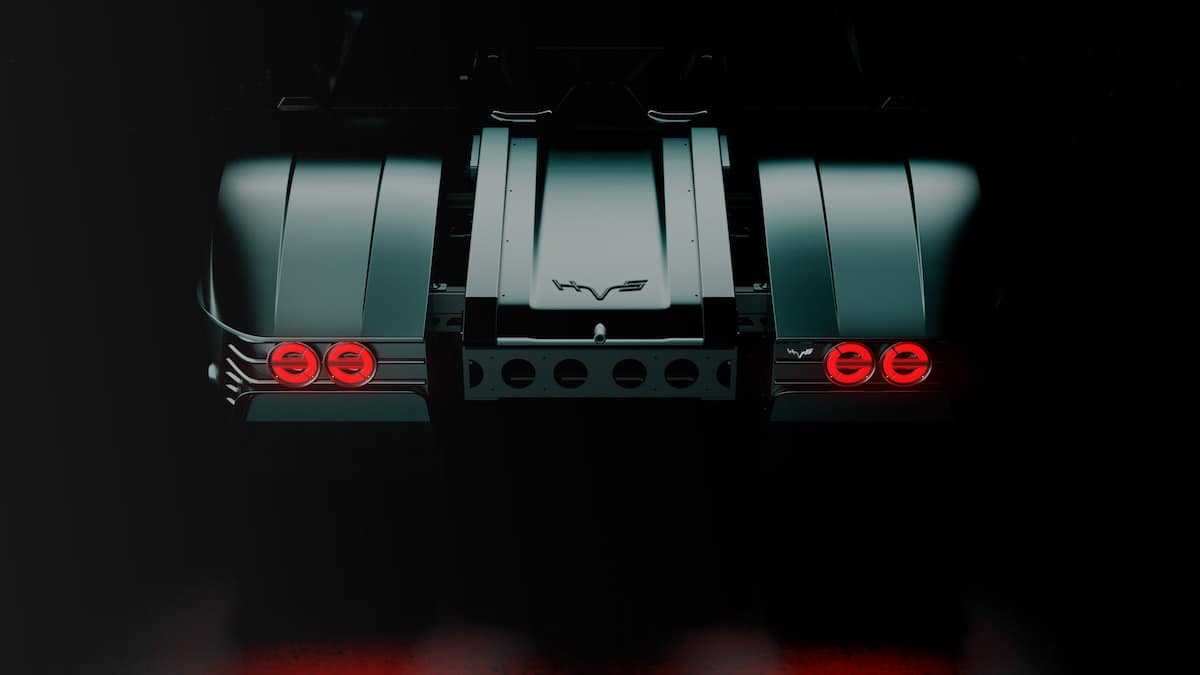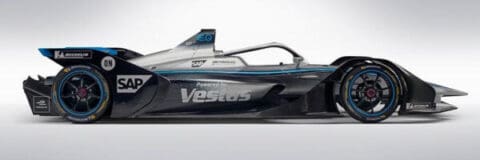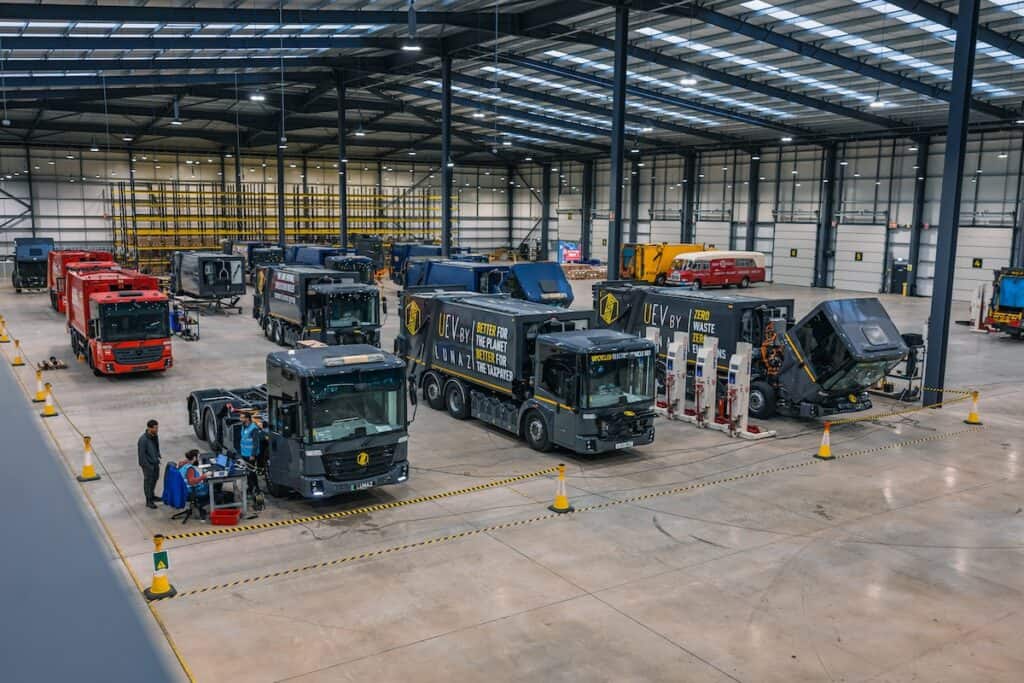
Independent analysis has proved that an upcycled electric vehicle (UEV) can provide for the world’s least-polluting refuse truck, compared not only to new diesel equivalents, but all-electric options, too.
In a new study commissioned by clean-technology company Lunaz, UEVs were found to emit 72% less CO2 than new diesel models, and produce 27% fewer emissions than an all-new electric equivalent.
Headquartered in England, Lunaz is pioneering production of UEVs to address the urgent requirement to transition two billion existing vehicles to clean-air powertrains, both sustainably and economically .
The vision for Lunaz is to remanufacture and electrify passenger, commercial and industrial vehicles of all sizes and specifications, in support of the global drive towards decarbonisation.
LCA savings equal to 245 flights LHR-LAX
A Lunaz UEV refuse collection truck saves 344 tonnes of carbon dioxide emissions (tCO2e) compared to a new diesel equivalent, according to an independent study commissioned by the company.
A carbon footprint of this size equates to 245 flights from London (LHR) to Los Angeles (LAX).
The comprehensive Lifecycle Carbon Analysis (LCA) was conducted by net zero sustainability consultants Tunley Environmental — and it did not stop at simply measuring UEVs against fossil-fuel equivalents.
The analysis also found that a Lunaz UEV saves 43 tCO2e when compared to a new all-electric model. This is equivalent to more than 30 commercial flights LHR-LAX, or the weight of 13 private jets.
Upcycling can give a truck three lives
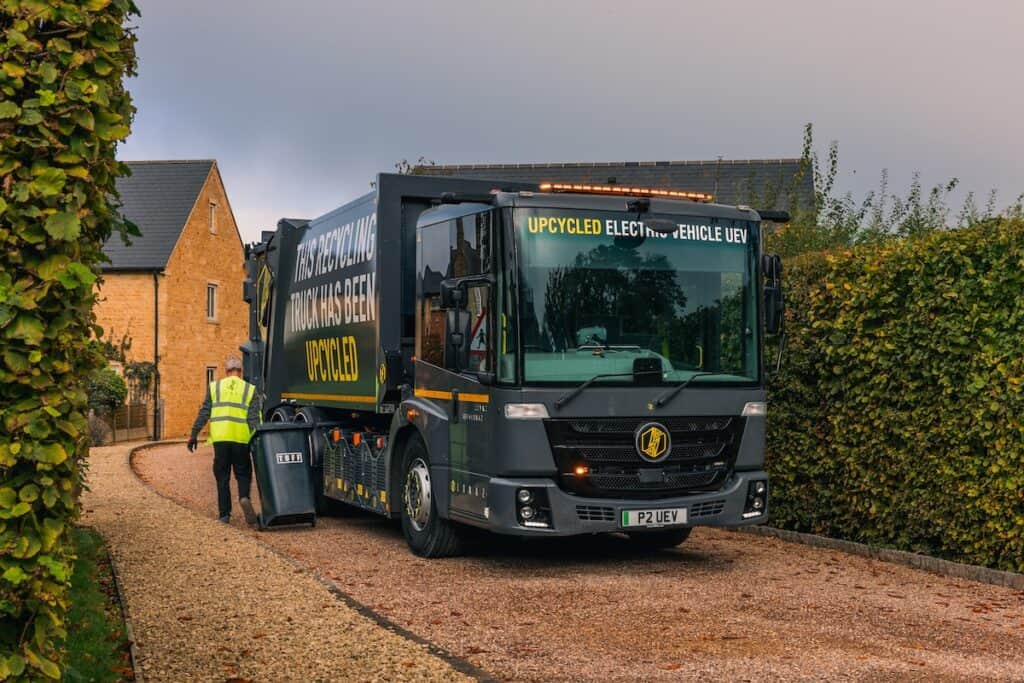
The LCA is fully comprehensive — it identifies and quantifies all sources of carbon emissions.
This includes the production, installation, use and end-of-life treatment of a Mercedes-Benz Econic refuse truck upcycled and electrified by Lunaz. The LCA then compares the Lunaz numbers to figures for conventional diesel and all-new electric versions of the same vehicle.
In the Lunaz upcycling process, end-of-life diesel refuse trucks undergo a bare-metal restoration; the engine and associated systems are removed, recycled and replaced with the Lunaz fully electric powertrain. The interior is remodelled with upgraded ergonomics, materials and technology, improving safety and operator wellbeing.
However, upcycling not only gives a second life to a diesel refuse truck. After seven years, Lunaz will take the vehicle back and refurbish it again, with a third refurbishment possible seven years after that.
The study therefore looks at the total CO2 emissions over three seven-year operating lifetimes. This is supported by a recent partnership with UK-based Altilium, in which a low-carbon logistical solution is being developed for the safe transportation and discharging of end-of-life electric vehicle (EV) batteries.
Embedded carbon and cradle-to-gate emissions
Preserving the embedded carbon in the raw materials and initial manufacturing emissions up to the point where the vehicle enters service — known as ‘cradle-to-gate’ emissions – is where Lunaz seeks to offer unprecedented sustainability benefits compared to all-new models.
This is much more environmentally impactful than the ‘tailpipe’ emissions of new diesel refuse collection vehicles in their early years of service. Given the greater raw material burden of all-new electric refuse trucks, their cradle-to-gate emissions are almost twice as high as a UEV at 99.5 tCO2e.
For operators and consumers, the most relatable statistic is likely to be operational carbon emissions.
The report calculated that total carbon dioxide emissions from a new diesel equivalent was 3.6 times, or 1,410 tCO2e, greater than a Lunaz UEV over three lifecycles.
Likewise, the report found that an all-new electric refuse truck was 27%, or almost 145 tCO2e worse on CO2 emissions, compared to a Lunaz UEV.
Biofuels, renewables and greening the grid
The report offers validation of the Lunaz upcycling approach as a means to drive down carbon emissions on the road towards net zero. It highlights that, as the proportion of renewable energy from wind, solar, tidal and nuclear sources increases in the grid, the lifetime emissions of EVs decrease.
This is significant because the figures above use average UK electricity grid CO2 values as a baseline. However, a likely ‘greening of the grid’ would reduce CO2 emissions significantly, by around 40%.
In addition, operators using certified 100% renewable tariffs, as Lunaz does, can achieve even lower emissions. The report suggests that these could drop by a further 65%.
The report also considers the effect on switching to biofuels, such as hydrogenated vegetable oil (HVO), which has production and usage emissions around 80% below those of commercial diesel fuel.
Nevertheless, over three seven-year lifecycles, the Lunaz UEV would still have fewer emissions than a diesel truck running on HVO, even before ‘greening the grid’ or renewable tariffs are considered.
The findings are a ringing endorsement of clean and green tech, says Founder of Lunaz, David Lorenz:
“At a time when investment in sustainable technologies and solutions, especially around transport, is front and centre in the news and legislation, this report is a huge vote of confidence, not just in our upcycling process, but in electric propulsion generally. The extent of savings is impactful, providing a clear path to value for our customers.”
On the road from Silverstone to international factories
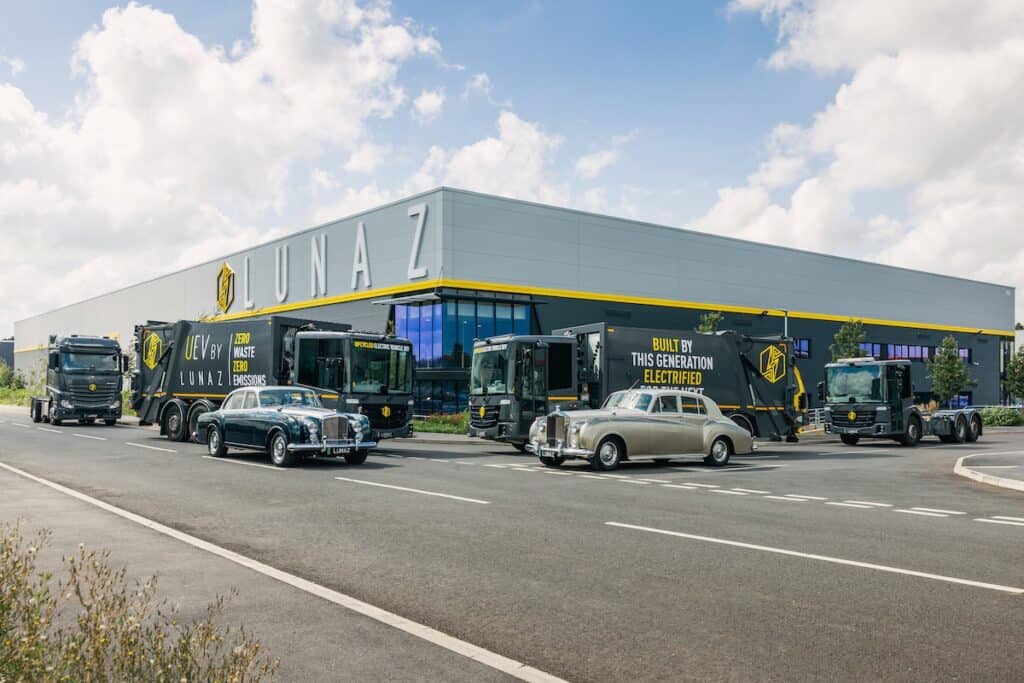
Lunaz was founded by David Lorenz in 2018 and named after his daughter, Luna.
The company proved its proprietary powertrain and up-process through the introduction of the world’s first electric Aston Martin, Bentley, Jaguar, Range-Rover and Rolls-Royce cars.
Lunaz Chief Technologist Jon Hilton actually built his reputation as Technical Director for Renault F1, winning Fernando Alonso’s successive World Championships.
Hilton later founded a hybrid powertrains company to exploit potential applications beyond F1 via the introduction of new Kinetic Energy Recovery Systems (KERS). Hilton also technically directed the first-ever hybrid Le Mans entry for Hope PoleVision Racing, sparking a passion for alternative powertrains.
Five years on from origin, Lunaz has attracted some of the most significant clean-tech investors in the world, enabling a fast-growth trajectory. The Lunaz business case is compelling.
By providing a sustainable and more economically viable alternative to replacing existing vehicles with new EVs or ICE equivalents, at full scale, Lunaz not only saves millions of tonnes in embedded carbon, but also billions of pounds in capital.
This approach has been commercially and technically proven through landmark fleet electrification agreements signed with UK Local Government Authorities and Biffa, the UK’s largest sustainable waste management company.
Maturing at pace, Lunaz now employs more than 250 highly skilled engineers and technicians at its upcycling and electrification campus on the Silverstone Technology Park, in England.
Working to a capacity of 1,110 vehicles per year at Silverstone, Lunaz is already upcycling pinnacle passenger cars and trucks at scale. Looking ahead, the company is on a production roadmap that should see it open four international factories before the end of the decade.
Further Reading:
- More about clean technology company and UEV pioneer Lunaz;
- More about sustainability consultants Tunley Environmental, responsible for the LCA;
- More about with Altilium, specialists in used EV battery metals extraction;
- Also on SustMeme, First all-electric truck for Amsterdam metal recyclers;
- Also on SustMeme, Workhorse of heavy industry goes electric;
- Also on SustMeme, Zero-emission hydrogen-electric HGV is UK first;
- Also on SustMeme, Charging ahead on the switch to electrified fleets;
- Also on SustMeme, Net zero road transport is still possible by 2050.
Check out the full archive of stories on the SustMeme Circular Economy Channel, Sponsored by Dow.


